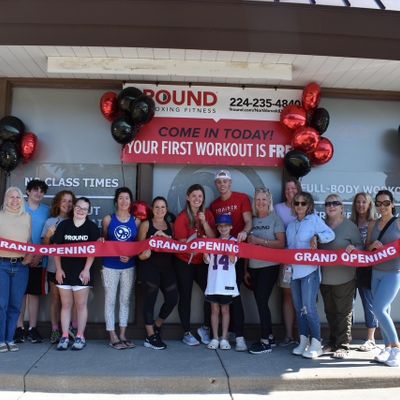What is Anaerobic Exercise?

As you start getting more involved with the nitty-gritty details of what makes your fitness routine work, you might start to uncover a few unfamiliar terms. Two that come up often, especially with high-intensity workouts like 9Round, are aerobic exercise and anaerobic exercise. Take a look at what these common phrases mean and how they’re used in 9Round workouts!
Aerobic vs. Anaerobic Exercise
Before you can fully understand anaerobic exercise and what it does for your body, you must first look at what aerobic exercise is and how it works. Based on the prefix “an,” you can probably deduce that we’re talking about exercise without an aerobic component here—let’s dive deeper into what this means.
Throughout the day, your body is constantly converting nutrients into a specific form of energy called adenosine triphosphate (ATP), which is the molecule your body relies on to power all your movements. However, the process of creating ATP differs based on the type of nutrient used, as well as the type of energy needed at the time. ATP is the only form of energy your body can use, but it can be broken down in one of two ways. The first is through your aerobic metabolism.
Aerobic means “with oxygen.” During aerobic exercise, which is typically low to moderate-intensity or endurance based, your body uses oxygen to break down ATP to produce energy. This process produces a lot of energy for you to use during your workout, but it does so at a slower pace compared anaerobic exercise.
However, despite it taking longer to happen, this process of breaking down ATP is much more sustainable and can help keep you going for longer periods of time. Therefore, your aerobic system is what powers activities such as jogging or the main portion of each round at 9Round, as you’re using less energy but extending the length of your workout. For quicker and more intense exercise, your body switches over to your anaerobic metabolism to create energy instead.
As you can probably guess, anaerobic means “without oxygen.” This refers to the process used to create energy during very intense, and short bursts of exercise. Instead of relying on oxygen to help you tap into ATP, anaerobic exercise uses the stored glycogen within your muscles. It produces a lot of energy very quickly, but it can only do so for a short period of time. We’re talking just 6-30 seconds here, give or take.
The anaerobic system is what powers activities like sprinting or punching it out during the last 30 seconds of the round. You can only keep up these activities at max intensity for a short amount of time because they consume a lot more energy and it’s not sustainable for your body to keep producing that much energy for longer than a few seconds.
Before we move on to why anaerobic exercise is beneficial for your workout routine, it’s important to note that both your anaerobic and aerobic systems are always working alongside each other, not exclusively, to get the job done. Depending on what type of activities you’re doing and how much energy you need, one will pick up a bit harder at times to make sure you have plenty of energy to go around.
Benefits of Anaerobic Exercise
Because anaerobic exercise relies heavily on the energy stored within your muscles, it helps increase and maintain your muscle mass to help you grow stronger and more powerful. Specifically, anaerobic exercise helps you target type II muscles fibers, or your fast-twitch muscle fibers, which are responsible for more explosive movements. It also increases your body’s ability to store glycogen within your muscles, which in turn helps you have more energy for getting through those intense exercises.
Additionally, anaerobic exercise allows you to reach a higher percentage of your heart rate maximum (80 and above), so you can improve your cardiovascular endurance and continue burning calories even after your workout is over, thanks to EPOC, or excess post-exercise oxygen consumption.
Still, one of the greatest benefits of incorporating anaerobic exercise into your fitness routine is the ability to get strong results in less time. This is, of course, what makes it possible to get an effective workout at your local 9Round studio in just 30 minutes.
However, because anaerobic exercise is so taxing on your body, it’s important that you follow each interval of intense exercise with a brief period of rest. You also need to give your body time to recover in between each workout, or you might run the risk of overtraining. This is why we recommend starting with just three days a week at your local 9Round to ensure your body is getting the rest it needs in between each KILLER workout.
How 9Round Uses Anaerobic Exercise
Our nine-round circuit system challenges both your aerobic and anaerobic systems with 3-minute rounds that consist of 2.5-minutes of moderate-intensity exercise and 30 seconds of vigorous-intensity exercise, followed by a 30-second active break between each round.
As you push yourself during those more intense parts of the workout, like those KILLER box jumps or the last 30 seconds of punching out, you’re tapping into your anaerobic metabolism to get the energy you need to finish strong. Then, we give you a 30-second active break to help you lower your heart rate and prepare for the next round.
Come learn more about 9Round’s triple-threat approach to wellness and how we help members grow stronger, physically and mentally, with a free session at your local studio. Use the link below to sign up for your preferred time, and we’ll see you soon for a KILLER workout.


